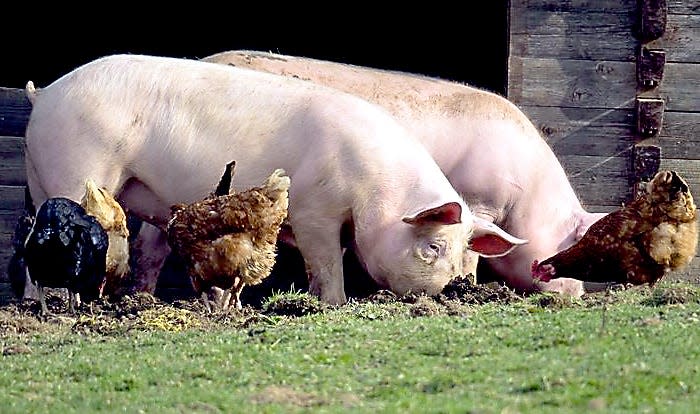Update: Antimicrobials sold for use in pigs

Antibiotics are an important tool used by pork producers to minimize the impact of disease in their herds.
Recommendations for managing antimicrobial use are included in the certification program adopted by commercial pork producers and are described in the pork industry guide to responsible antibiotic use. To ensure responsible antibiotic use, these guidelines stress the importance of pork producers working closely with veterinarians to develop disease prevention strategies best matched to their farm, sound record keeping/ transparency, and use of alternatives to antibiotics when possible.
The FDA summary report for 2019 shows that, when data are combined for medically important antibiotic sales for all species of livestock, the amount (reported as total weight, not number of doses) increased by 3% compared to 2018; this translates to a net increase of 400,870 kilograms of drug. Looking at data for sales and distribution of medically important antibiotics for use in pigs only, the year-over-year increase was about 9% (increased by 208,051 kg).
Most of the increase in sales of medically important antibiotics used for pork production in 2019 came from the sale of tetracyclines, which increased by 8%. This is not surprising, given that tetracyclines have accounted for about 80% of the total U.S. market for feed grade antibiotics used in pigs during the past several years. These compounds possess broad spectrum activity that includes Gram+ and Gram- bacteria and frequently are used to treat scours caused by E. coli and respiratory diseases. They also are relatively inexpensive and easy to administer.
Sales of aminoglycoside and sulfa-containing antibiotics for use in swine increased by 12% and 58%, respectively, while lincosamides increased by 9%. However, their net impact on total antibiotic sales for swine was small because amounts of these three classes combined was less than 6% that of tetracyclines.
In the FDA summary report, sales of medically important antibiotics sold as injectables (e.g., includes some macrolides, aminoglycosides, cephalosporins, quinolones) are combined for all species. Sales of injectables in 2019 declined by 12% from 2018. The combined amount of injectable antibiotics sold for use in livestock in 2019 was about 5% that of the combined sales of products administered orally; that pattern has been consistent since 2009 when tracking of these data began. Sales of non-medically important antimicrobials, which includes ionophores and a few small sales-volume products not used in human medicine, had U.S. sales for use in pigs of 404,300 kilograms in 2019, a reduction of 2% from 2018 level.
Although the basis for the increase in sales of medically important antibiotics for use in U.S. pigs has not been established, increased herd size is one likely contributing factor. Slaughter hog number, average weight of hogs at slaughter and weight of pork produced are key endpoints tracked carefully by USDA, and each of these indicators increased by about 3% between 2018 and 2019.
A second factor that may have contributed to increased use of feed grade antibiotics in pigs is farm labor shortages which have been widely reported. Antibiotics delivered in-feed or water, as tetracyclines and sulfa drugs typically are, require less labor than is required for individual animal administration by injection. Although data on injectables is not broken down by species, the fact that injectables (for all species combined) declined by 12% in 2019 while sales of less labor-intensive in-feed and in-water products increased is consistent with the possibility that broadly reported shortages in farm labor, or efforts to reduce labor costs, may have played a role.
Another possible explanation for why sales and delivery of certain classes of medically important antibiotics increased is that they were purchased to treat disease conditions that may have increased following VFD implementation in 2017. Firm data on the impacts of VFD on swine health and farm practices will be illustrated by results from the USDA/NAHMS Swine 2021 survey. However, based on a more limited national survey conducted in 2018 by Michigan State University Extension veterinary feed directive year 1 in review, 31% of swine producers who completed the survey reported an increase in swine sickness following implementation of veterinary feed directive guidelines, and 18% said they would like to learn more about non-antibiotic options for sick animals (follow-up action most frequently requested in the survey).
Antibiotic sales data reported to FDA provide a useful, albeit imperfect, indication of how and why farmers use antibiotics. Not all data are reported by species, and there is always more than a year-long lag between when the products are purchased and when they get reported. Numerous factors influence when and how antibiotics are used to combat disease in pigs and other livestock. Despite the modest increase recorded in 2019, FDA data suggest overall use of medically important antibiotics in pigs was still the third lowest, for the year, since 2009 when this metric for antibiotic sales to livestock producers was first reported. Importantly, 96% of medically important antibiotics sold for use in pigs in 2019 came with a veterinarian’s prescription or under a VFD. This high level of compliance by pork producers is consistent with the findings from 2018. It further demonstrates that, despite modest increase reported in 2018 and 2019, overall use of antibiotics for swine production, when normalized against pounds of pork produced, remains well below the historical average.
Because pig health issues can vary year-by-year and often are regional or even farm-specific, your veterinarian or nutritionist are the best sources of ideas for strategies for reducing the use of medically important antibiotics in your herd.
This article originally appeared on Sturgis Journal: Antibiotics are an important tool used by pork producers to minimize the impact of disease in their herds.
